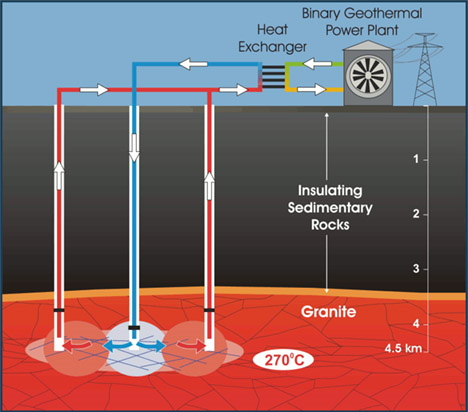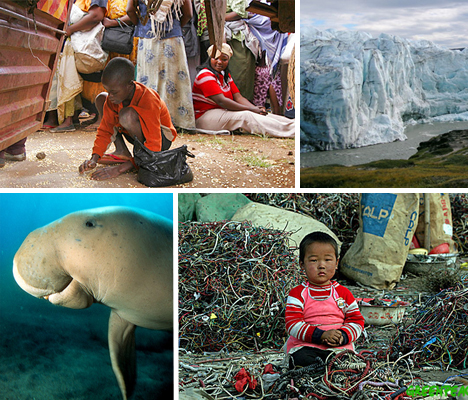
Mass extinction, rainforests rapidly disappearing, clouds of pollution spreading across the globe and whopping carbon footprints are only a few of the incredible environmental quandaries we’re facing today, and the numbers will blow your mind. We produce enough trash to circle the globe hundreds and hundreds of times, and the amount of money wasted on the Iraq war could have solved many of the world’s problems. It’s not all bad news, though: we’ve got thousands of years worth of geothermal power at our fingertips, and the potential of renewable energy is amazing indeed. Here are 15 of the most mind-boggling green facts and statistics, from a patch of plastic trash in the Pacific to the exploding human population.
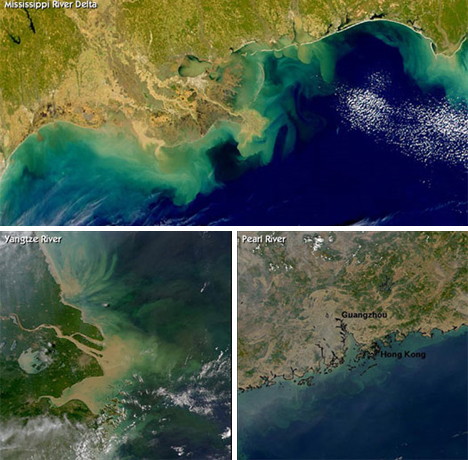
(image via: NASA)
Oxygen-starved dead zones that cannot sustain life now cover an area roughly the size of the state of Oregon. Spanish researchers also recently found that many species die off at oxygen levels well above what is now considered uninhabitable, suggesting that the extent of dead zones in coastal areas is greater than previously known. Dead zones are caused by excess nitrogen from farm fertilizers, factory and vehicle emissions, sewage and other pollution runoff.
(image via: AGEA)
1% of Australia’s untapped geothermal power potential could provide enough energy to last 26,000 years. Sure, we’ve got a long way to go before we’re actually able to use that energy, but the fact that such energy is available paints a much brighter picture of our energy future, especially since geothermal power is one of the lowest priced forms of renewable energy. The Australian Geothermal Energy Association reports that current government policy allows up to 2200 megawatts of geothermal energy to be developed by 2020, which would represent 40% of the government’s current renewable energy target. The Australian government has also announced that they will invest $50 million to help develop geothermal power.
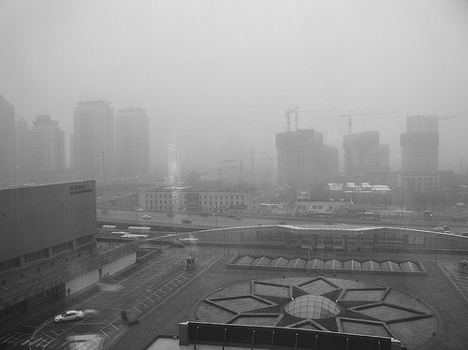
(image via: Flickr user kevindooley)
Only 1% of China’s 560 million city residents breathe air that is considered safe by the European Union. And, this severe air pollution problem, which has led to cancer becoming China’s leading cause of death, is no longer affecting the Chinese people alone. China’s dirty air is spreading across the globe as sulfur dioxide and nitrogen oxides spewed by the country’s many factories and coal-fired power plants fall as acid rain upon South Korea and Japan. The heavy brown clouds of pollution that hover over Asia are now spreading as far as to the west coast of the U.S. Much of the particulate pollution over Los Angeles originates in China.

(image via: LA Times)
The Wall Street bailout is costing taxpayers around $700 billion and growing. Yet, just 4% of the Wall Street bailout could end world hunger. Though the problem is often touted as insurmountable, in truth, global food insecurity could be completely solved by creating agricultural programs that would cost about $30 billion a year. 854 million people in the world – one in seven – do not get enough food to be healthy, making hunger the number one risk to health worldwide.
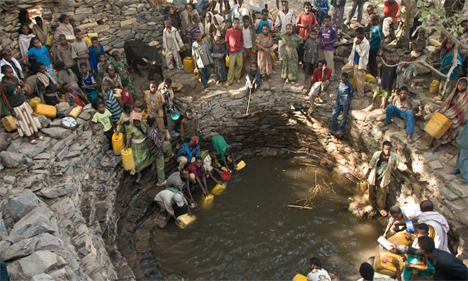
(image via: Charity Water)
Less than 1% of the world’s freshwater is readily available for human use. The amount of water that’s safe for us to use is declining sharply due to pollution and contamination. 87% of freshwater resources are used for agriculture, as much of 60% of that is wasted due to inefficient watering systems.
With the population boom and global warming, we’re going to be fighting over water by mid-century. In fact, in Asia – where water has always been considered an abundant resource – per capita availability of freshwater has declined by 40%-60% between 1955 and 1990, and most Asian countries are expected to have severe water shortages by 2025.
Despite these problems, many people – Americans and Australians in particular – are wasting water as if it will always be plentiful. The average American uses far more water than citizens of other countries – about 550 liters per day. The average American household uses 300 gallons of water daily, with many wasting thousands of gallons every year on lawn irrigation.

(image via: Chris Jordan)
America is the queen of trash. Every day in the U.S., we produce enough trash to equal the weight of the Empire State Building. We throw away 2.5 million plastic bottles every hour, produce enough styrofoam cups annually to circle the earth 436 times and trash enough office paper to build a 12-foot wall form Los Angeles to New York City. We throw away 570 disposable diapers each second, and toss out enough aluminum cans to rebuild our commercial air fleet every three months. Each year we fill enough garbage trucks to stretch from Earth halfway to the moon.
And of course, not all trash even makes it to the landfill. The Great Pacific Garbage Patch, which is a swirling vortex of waste and debris in the Pacific Ocean, covers an area twice the size of the continental U.S. and is believed to hold almost 100 million tons of garbage.

(image via: Wikimedia Commons)
The Iraq War has cost somewhere in the neighborhood of $3 trillion, and according to The Washington Post, that’s a conservative estimate. A website called 3trillion.org lets you go on a shopping spree with that money, and EarthFirst.com found that we could have spent that money on all of the following and much more: universal health care for every American, switching all of the U.S. to run on solar power, building a national rapid transit system, cleaning up pollution in major cities, achieving universal literacy, repairing the damage done by Hurricane Katrina, providing non-violent leadership training for 10 million leaders across the world and buying new clothing, shoes, coats and school supplies for 10 million children.

(image via: Greenpeace)
20 to 50 million metric tons of electronic waste are generated worldwide every year. Only 11.4% of that is recovered for “recycling”, and of that amount, very little actually ends up getting recycled. The crew of 60 Minutes recently followed a container of e-waste that was supposed to be headed for recycling, that was instead illegally dumped in China. Toxic chemicals like cadmium, lead, mercury, chromium and polyvinyl chlorides from these discarded electronics contaminate poor Hong Kong communities like Guiyu, which has been found to have the highest levels of cancer-causing dioxins in the world. And, the problem is getting worse by the day: electronic waste is the fastest-growing waste stream worldwide. Americans throw out about 130,000 computers every day, and over 100 million cell phones annually.
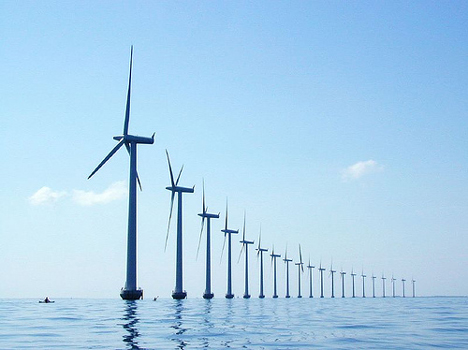
(image via: Flickr user Mads Prahm)
Within 10 years, wind power could provide 20% of America’s power. North Dakota alone could theoretically produce enough wind-generated power to meet the needs of more than a fourth of U.S. electricity demand. And, offshore wind turbines have the potential to produce as much power as all of the power plants in the United States. America definitely needs a new modernized power grid to harness wind energy, but as T. Boone Pickens points out, “If the government commits to modernizing our nation’s power grid in the same fashion that we modernized our highways, we can make some serious progress in a relatively short time.”
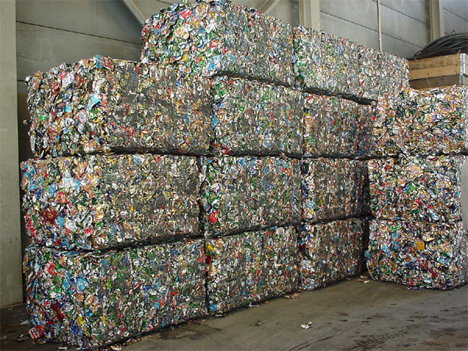
(image via: Wikimedia Commons)
Recycling one ton of paper saves 17 trees, 2 barrels of oil, 4,100 kilowatts of energy, 3.2 cubic yards of landfill space and 60 pounds of air pollution. Recycling one aluminum can saves enough electricity to power a TV for three hours, and aluminum cans can be recycled an unlimited number of times. Recycling a ton of glass saves the equivalent to 9 gallons of oil. Increasing steel recycling by 50% would save the energy equivalent to 7 nuclear power plants. These statistics show just how important recycling really is, and how much we need to ramp it up.

(image via: Wikimedia Commons)
The human population on earth has grown more in the last 50 years than it did in the previous 4 million years. It took almost all of human history – until the early 1800s – to reach a global population of 1 billion. Today, we’re at over 6.7 billion and adding an estimated 74 million people to the planet every year. In fact, the United Nations believes that we’ll reach 9 billion by 2050. Such a large population will put a huge strain on already stretched resources, making severe food and water shortages far more likely.

(image via: National Geographic)
One in four mammals is at risk of extinction. Marine mammals in particular face even steeper odds, with one in three threatened. Humans are mostly to blame as we’ve encroached upon their habitats, polluted the earth and hunted far too many of them. The problem is especially bad in Asia, where agricultural expansion and development of infrastructure has led to a staggering statistic: 79 percent of the continent’s primate species face extinction. Across the world, 78 percent of marine mammals are threatened by accidental deaths such as getting caught in fishing nets intended for other species.

(image via: Wikimedia Commons)
At least 50 million acres of rainforest are lost every year, totaling an area the size of England, Wales and Scotland combined. More than 50 percent of all living creatures on the earth reside in tropical rainforests, so with rainforest destruction they’re disappearing at a rate of 100 species per day. Experts believe that 5 to 10 percent of tropical rainforest species will become extinct by during the next half-century. They’re also projecting that half of the remaining Amazon rainforest may be destroyed by the year 2030. The World Wildlife Fund concluded that 55 percent of the world’s largest rainforest stands to be severely damaged from agriculture, drought, fire, logging and livestock ranching over the next 22 years.
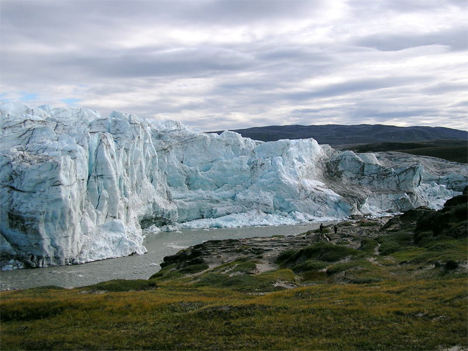
(image via: Wikimedia Commons)
Average temperatures will increase by as much as 12 degrees Fahrenheit by the end of the 21st century if greenhouse gas emissions continue to rise at the current pace. Even a temperature rise of just 7.2 degrees Fahrenheit would create a catastrophic domino effect, wiping out hundreds of species, bringing extreme food and water shortages and causing floods that would displace hundreds of millions of people. These findings by an expert panel of scientists leave little doubt that humans are to blame for global warming, and affirms that current greenhouse gas emissions are totally unsustainable. A rise in temperature of 7.2 degrees in this century would see the world warm as much in 100 years as it did during the last 15,000 years since the end of the last ice age.

(image via: Flickr user kcjc009)
If the entire world lived like the average American, we’d need 5 planets to provide enough resources. Even if you’re the most dedicated treehugger out there, if you’re American, your carbon footprint is still double the per-capita average of most of the world. Though America would have to reduce our carbon-emitting habits by 83% in order to be sustainable, that’s not quite as insurmountable as it sounds. A shift toward renewable energy, conservation, more efficient waste management and greater concentrations of people living in dense urban communities will go far toward decreasing our carbon footprint as a nation.


